

Extraction RTS

7 People

3D Environment Artist

PC

3 Months
Summary

Recon: last Decent is an intense blend of real-time strategy and extraction gameplay, set in a post-apocalyptic future. Players assume the role of humanity's last hope, sent to a transformed Earth to recover a vital "quantum core" needed to save the Mars colony. On Earth, bioluminescent flora and insects dominate the landscape, creating a hostile environment where survival hinges on strategy and precision. Between missions, players prepare aboard their spaceship, crafting units or upgrading tools. Every decision counts: adapt, outsmart the planet’s apex predators, and extract critical resources—or risk losing it all.
3D-Art








Workflow







References
High Poly




Texturing
Low Poly

To finalize the 3D model, it underwent numerous iterations, and shapes were tested using the compiled references to achieve the appropriate design language.
Prototyping - Spacepod
Working with Unity presented several challenges. To ensure our game achieved the desired level of detail, the team had to focus on optimizing assets. For instance, foliage had to be created as low-poly as possible, while multiple LODs needed to be developed for the trees.

LOD0 - 8000 verts

LOD0

LOD1 - 2000 verts

LOD1

LOD2 - 12 verts

LOD2
To create the transparent leaves for the grass, trees, and ferns, I used Substance Designer. The software allowed me to achieve the desired shapes and, thanks to its procedural nature, provided continuous opportunities for adjustments.

Creation of Fern Heightmap
To further optimize performance in Unity, efforts were made to minimize draw calls for textures. This was achieved by using texture atlases.

Texture Atlas Foliage
Während das Environment möglichst performanceoptimiert gestaltet werden musste, hatte ich andere Anforderungen für das Cockpit der Deployszene des Spiels. Spieler haben hier die Möglichkeit mit integriertem UI zu interagiere und können an einzelne Elemente heranzoomen, wodurch ein höherer Detailgrad erfordert war. Die Bildschirme wurden später durch UI ersetzt und haben daher placeholder Texturen.


While a higher level of detail was required here, optimization was still a priority. Many textures were reused to reduce draw calls, and details such as buttons or knobs were baked from a high-poly model to a low-poly model.
